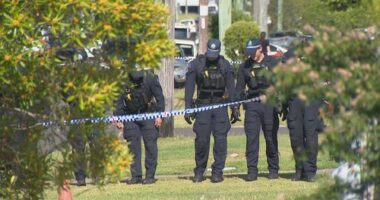Share this @internewscast.com
Australia’s declining birth rate recently captured attention when the Bureau of Statistics disclosed it has plummeted to an unprecedented low of 1.48, significantly beneath the “replacement” threshold.
However, emphasizing this statistic alone may obscure more substantial demographic challenges and foster an overly pessimistic outlook, according to some specialists.
Glen Capuano from the data insights firm .id explained that Australia’s birth rate has been in decline since its 1961 peak of 3.54, only briefly rising above 2 during 2008-2009, spurred by the government’s baby bonus initiative.

This trend is consistent with global patterns, Capuano noted, though further significant declines are not anticipated.
Demographers are particularly concerned with the increasing age of first-time parents, currently averaging 32.1 years for mothers and 33.9 years for fathers.
Factors such as economic pressures, diminishing hopes of homeownership, educational pursuits, and career ambitions are contributing to the decision to delay starting a family.

And breaking down demographics at a local level bears this out, with more children being born, and earlier, in more affordable regional areas and the outer suburbs of big cities.
“They’re areas where you can, presuming you’re a decent salary, afford housing,” Capuano said.
Migrants to Australia, usually stereotyped – sometimes negatively – as having larger families, are also bucking the trend.
Capuano said birth rates to couples resident in but not born in Australia were actually lower than those of Australian-born couples.

He said these trends meant Australia needed to consider how it could support new families – and how the country should look at immigration.
“If you have a look at these birth rates, population decline sets in at around 2050,” Capuano said.
That’s when deaths per year begin to outnumber births per year.
“We want to avoid a situation like they have in Japan, where they’re losing one million people more a year than are being born,” he said.
Emeritus Professor of Demography Peter McDonald from the Australian National University points to flaws in the methodology used to calculate Australia’s birth rate, saying Australians, as in citizens, had one of the highest birth rates in OECD countries.
He points to the “impossible scenario” of births in Victoria rising 9400 in 2024, while falling nationally by 4100.
“According to Births Australia 2024, from 2023 to 2024, the number of births in Victoria increased by 9400 while, in the rest of Australia, the number of births fell by 4100.

“This does not reflect reality because the births data are births by year of registration, not by year of occurrence,” he said.
“Registrars in NSW and Victoria very often do not process the births that have occurred in sufficient time for them to be included in the ABS stats for a year, but then excess births are recorded in the following year when the registrations catch up.”
The ABS noted the same phenomenon in its report.
“Births Australia 2024 shows that the average number of births that women have had by age 50 was most recently 2.02 and this number has been flat for the past five years,” McDonald said.
“This, termed cohort fertility, is a better way to measure fertility because the annual number, the total fertility rate (TFR), is affected by the delay of births, most of which take place at a future time.”

He said another reason for the falling TFR was a surge in Australia’s “temporary” population, such as international students, whose fertility rate was “close to zero”.
“As an indication of this effect, the TFR in 2024 was 1.64 for Australia women and 1.25 for overseas-born women. A rate of 1.64 is one of the highest in the OECD countries,” he said.
“The result is that Australia is one of the youngest countries in the OECD and, while we are ageing and will continue to age, the rate and final level of population ageing is much more manageable than it is in most OECD countries.”










